Abstract
Growth of Zea mays L. cv Potro roots was inhibited by the herbicide metsulfuron methyl (MSM) at the lowest concentration tested: 5 nanomoles per liter. Pretreatment of corn seeds with commercial 1,8-naphthalic anhydride (NA) at 1% (w/w) partially reversed MSM-induced root growth inhibition. MSM at a concentration of 52 nanomoles per liter was taken up rapidly by roots and accumulated in the corn tissue to concentrations three times those in the external medium; the safener NA increased MSM uptake up to 48 hours. The protective effect of NA was related to the ability of the safener to increase the metabolism of MSM; tenfold increases in the metabolic rates of MSM were observed in NA-pretreated corn seedlings grown for 48 hours on 52 nanomolar [14C]MSM solution. DNA synthesis determined by measurement of [3H]thymidine incorporation into DNA was inhibited by root MSM applications; after a 6-hour application period, 13 nanomolar MSM solution reduced DNA synthesis by 64%, and the same reduction was also observed with NA-pretreated seedlings. Pretreatment of corn seeds with safener NA did not increase the acetolactate synthase activity in the roots and did not change, up to 13 micromoles per liter, the in vitro sensitivity of roots to MSM.
Full text
PDF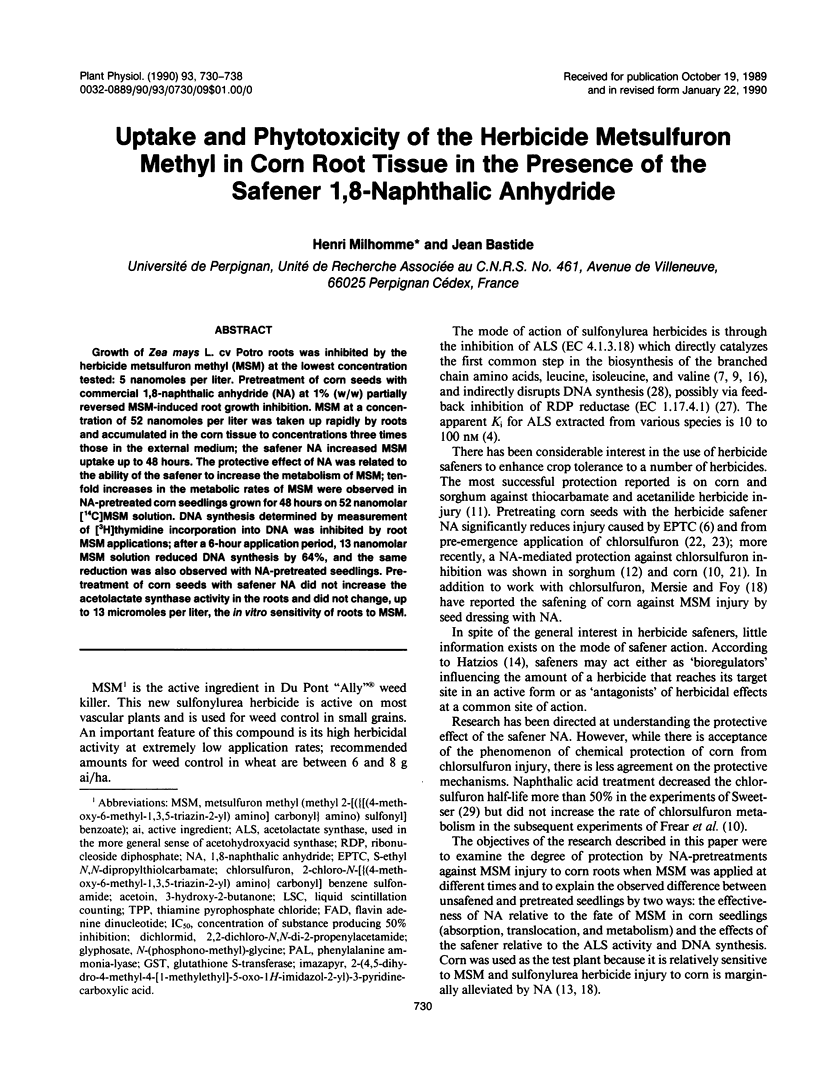
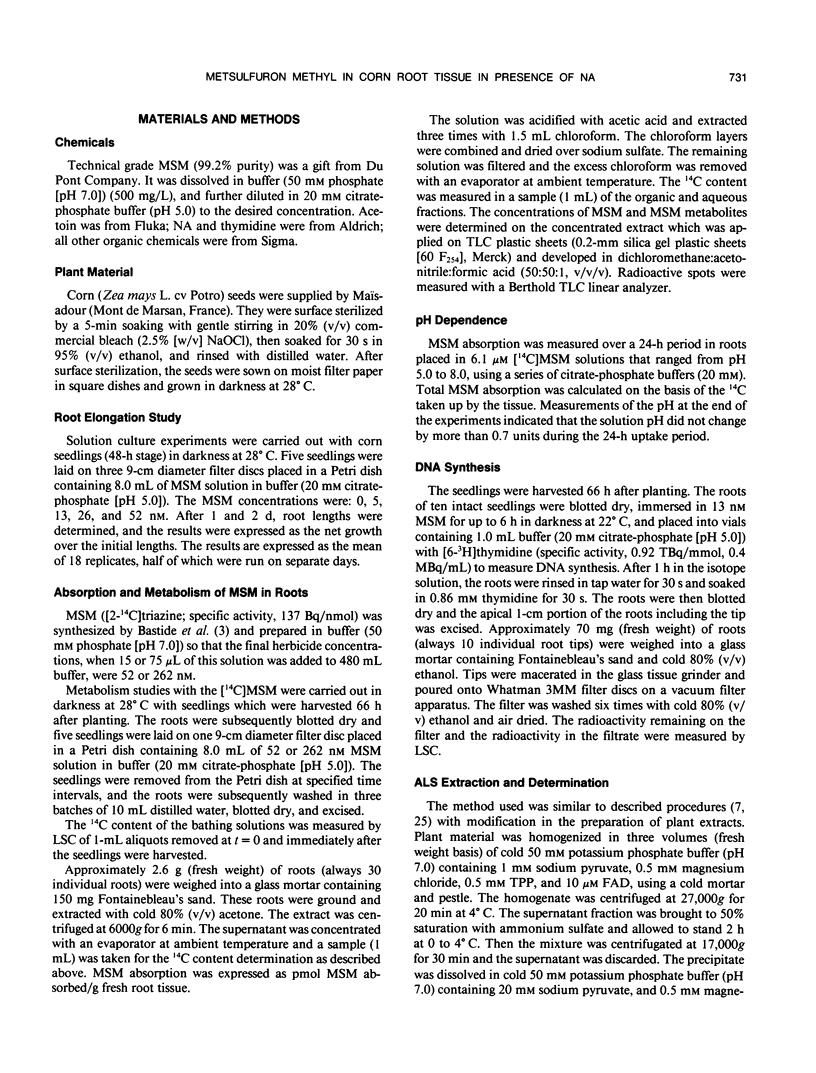
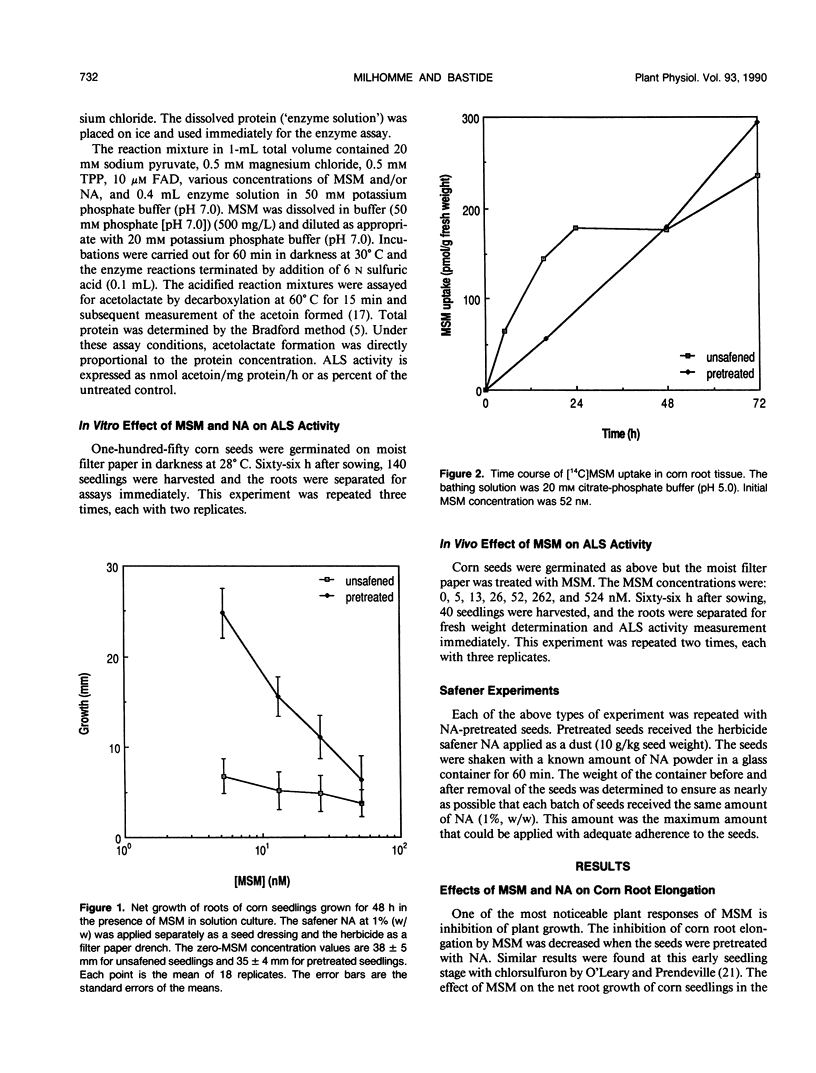
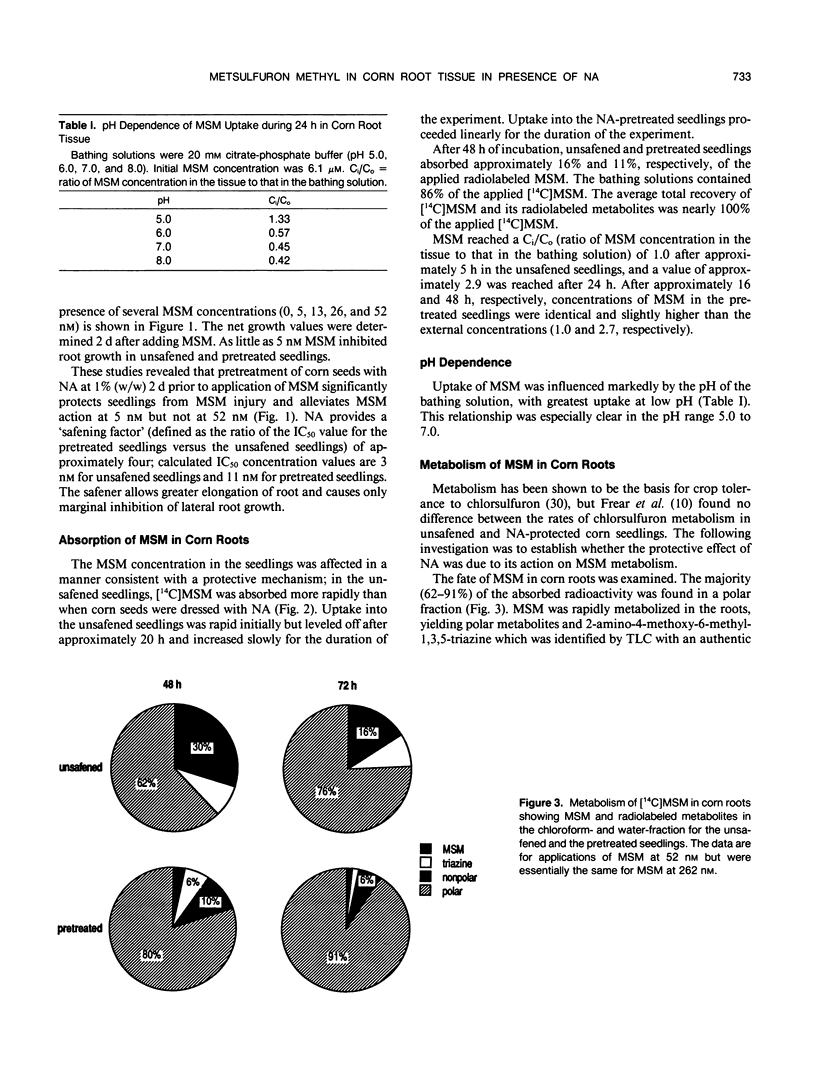
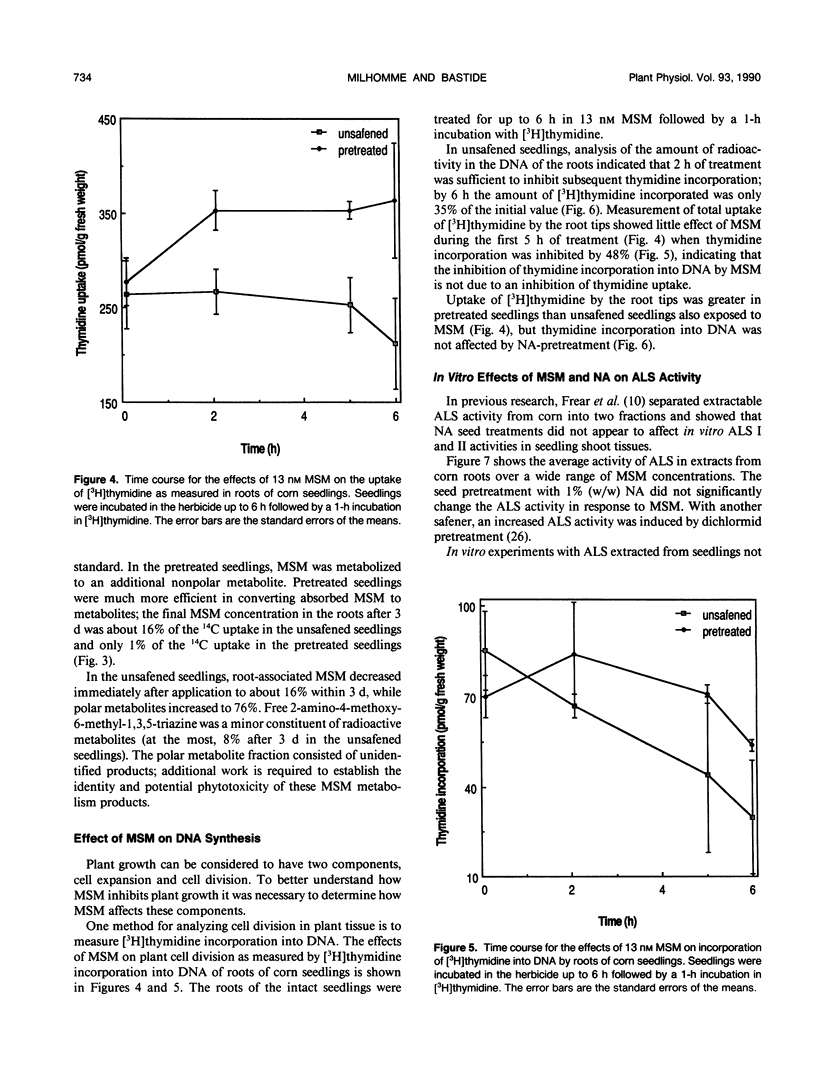
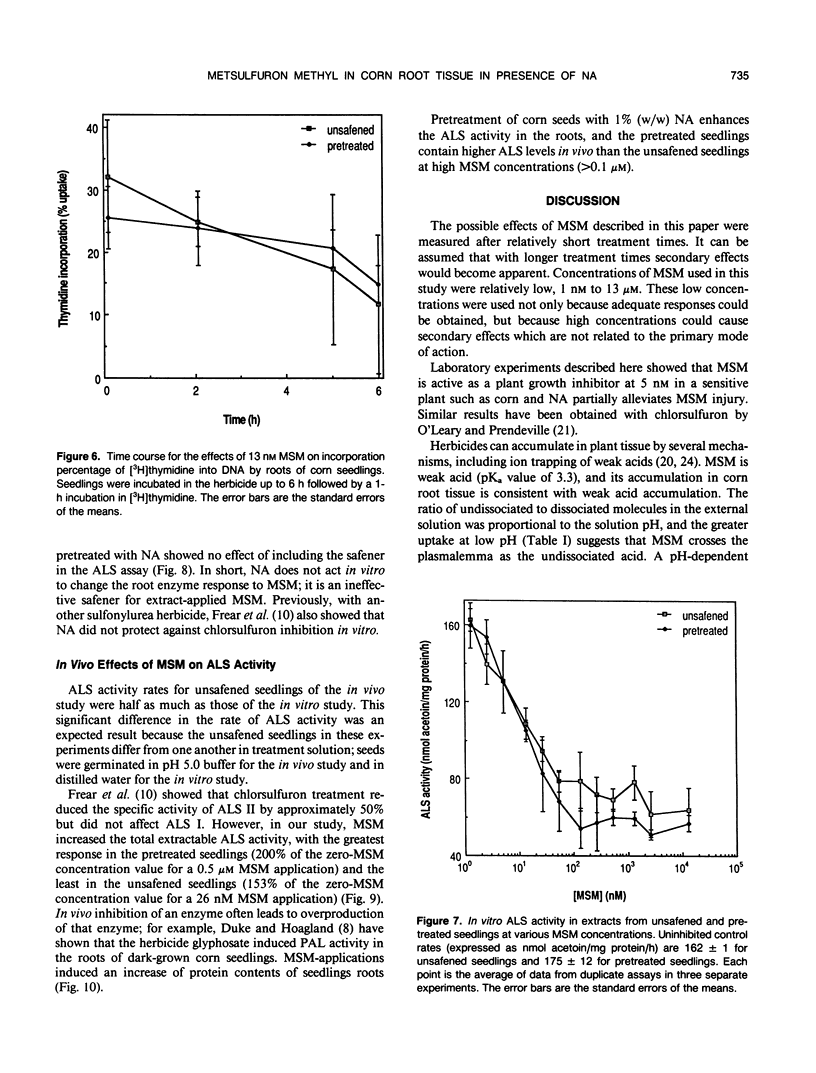
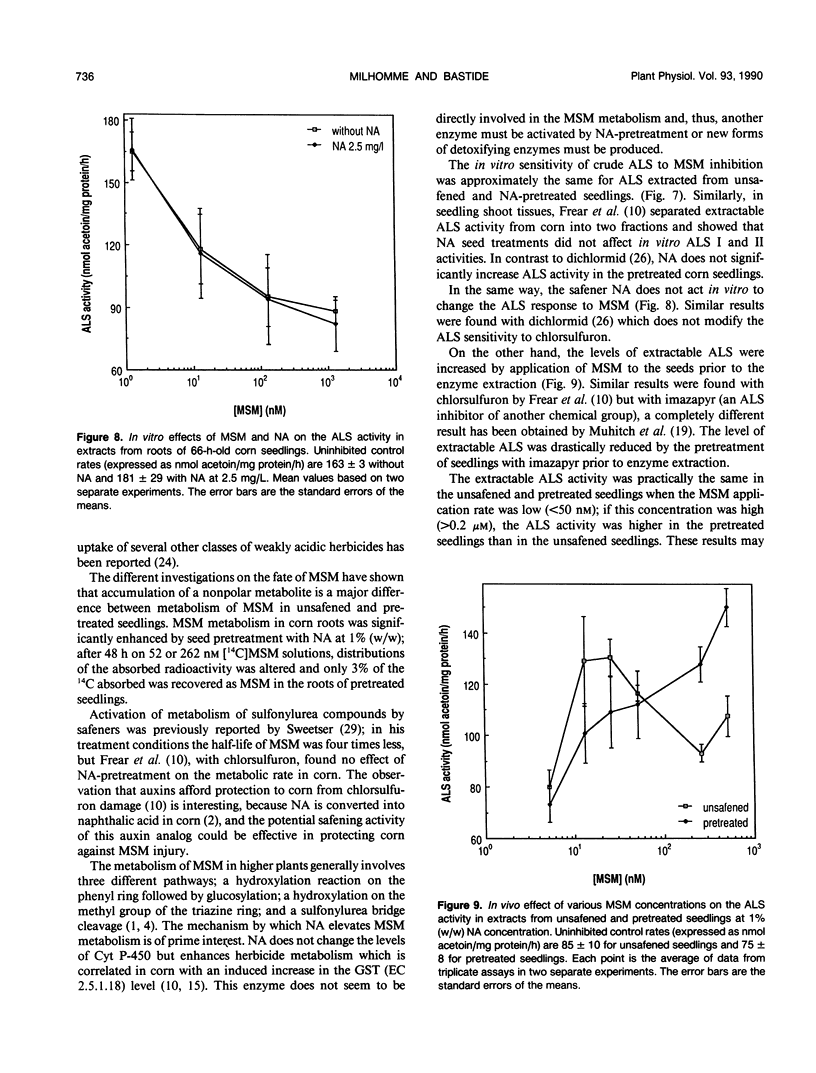
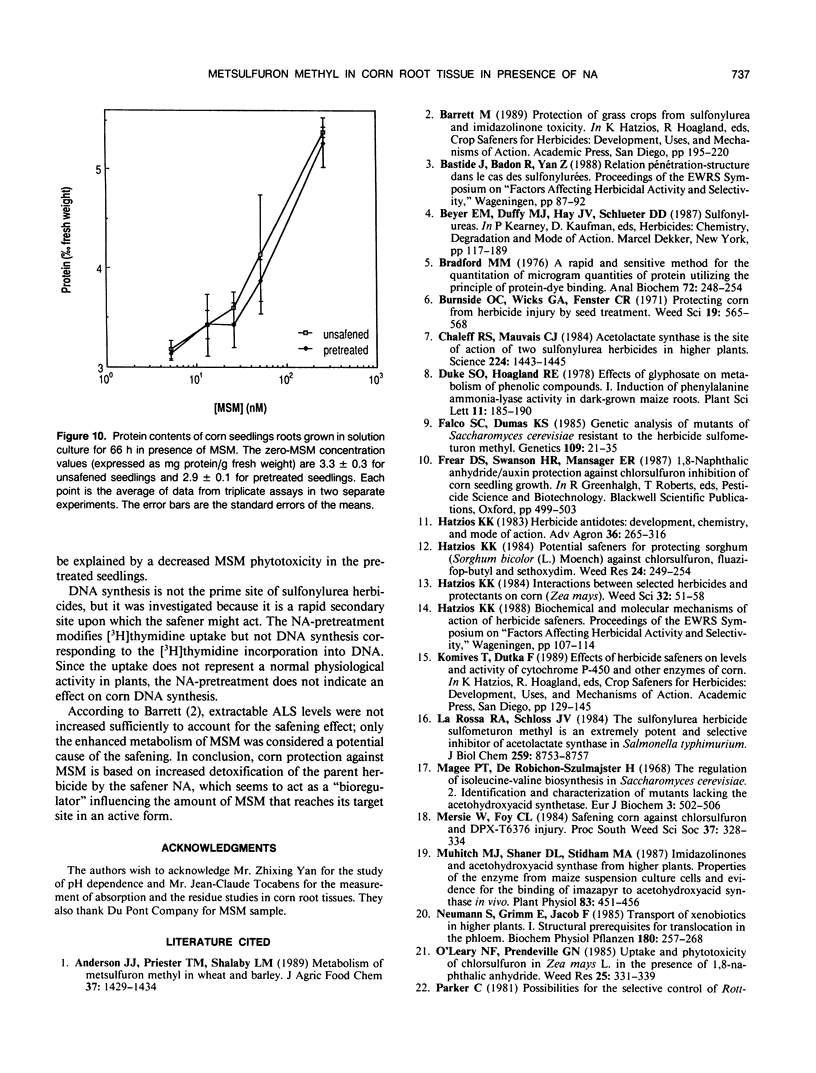
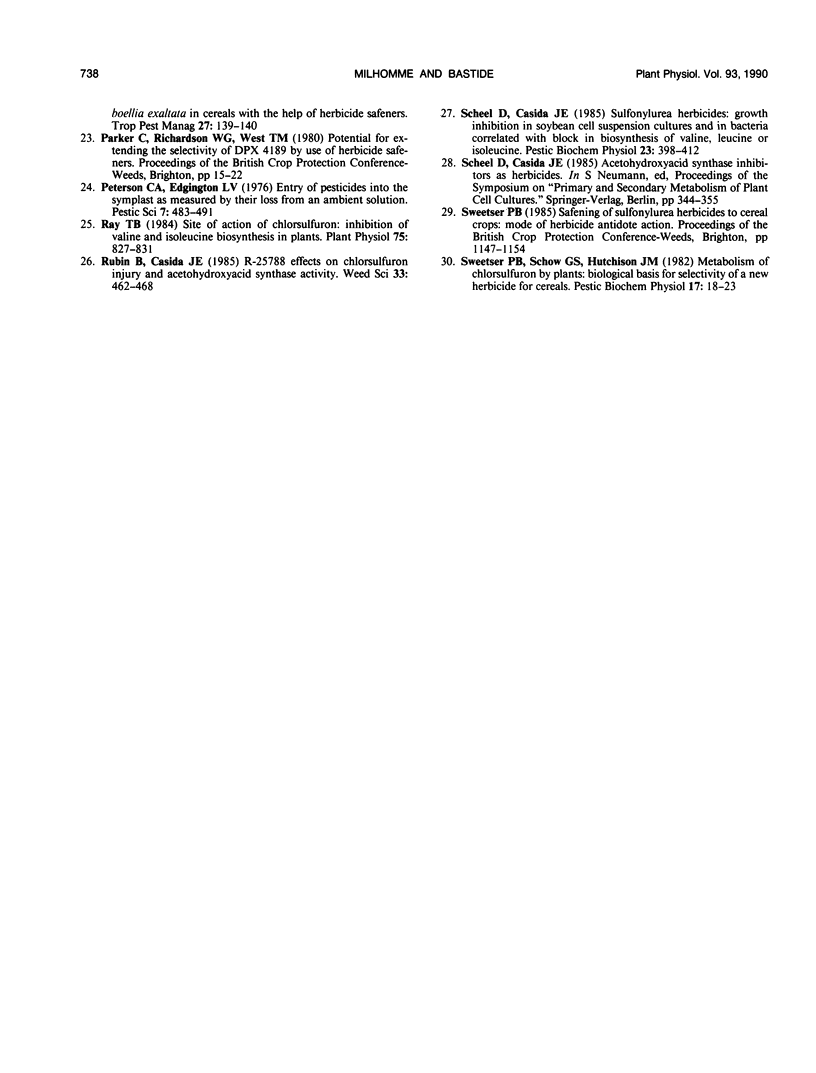
Selected References
These references are in PubMed. This may not be the complete list of references from this article.
- Bradford M. M. A rapid and sensitive method for the quantitation of microgram quantities of protein utilizing the principle of protein-dye binding. Anal Biochem. 1976 May 7;72:248–254. doi: 10.1016/0003-2697(76)90527-3. [DOI] [PubMed] [Google Scholar]
- Chaleff R. S., Mauvais C. J. Acetolactate synthase is the site of action of two sulfonylurea herbicides in higher plants. Science. 1984 Jun 29;224(4656):1443–1445. doi: 10.1126/science.224.4656.1443. [DOI] [PubMed] [Google Scholar]
- Falco S. C., Dumas K. S. Genetic analysis of mutants of Saccharomyces cerevisiae resistant to the herbicide sulfometuron methyl. Genetics. 1985 Jan;109(1):21–35. doi: 10.1093/genetics/109.1.21. [DOI] [PMC free article] [PubMed] [Google Scholar]
- LaRossa R. A., Schloss J. V. The sulfonylurea herbicide sulfometuron methyl is an extremely potent and selective inhibitor of acetolactate synthase in Salmonella typhimurium. J Biol Chem. 1984 Jul 25;259(14):8753–8757. [PubMed] [Google Scholar]
- Magee P. T., Robichon-Szulmajster H. The regulation of isoleucine-valine biosynthesis in Saccharomyces cerevisiae. 2. Identification and characterization of mutants lacking the acetohydroxyacid synthetase. Eur J Biochem. 1968 Feb;3(4):502–506. doi: 10.1111/j.1432-1033.1967.tb19559.x. [DOI] [PubMed] [Google Scholar]
- Muhitch M. J., Shaner D. L., Stidham M. A. Imidazolinones and acetohydroxyacid synthase from higher plants: properties of the enzyme from maize suspension culture cells and evidence for the binding of imazapyr to acetohydroxyacid synthase in vivo. Plant Physiol. 1987 Feb;83(2):451–456. doi: 10.1104/pp.83.2.451. [DOI] [PMC free article] [PubMed] [Google Scholar]
- Ray T. B. Site of action of chlorsulfuron: inhibition of valine and isoleucine biosynthesis in plants. Plant Physiol. 1984 Jul;75(3):827–831. doi: 10.1104/pp.75.3.827. [DOI] [PMC free article] [PubMed] [Google Scholar]
- Roy T. M., Fleming D., Anderson W. H. Tularemic pneumonia mimicking Legionnaires' disease with false-positive direct fluorescent antibody stains for Legionella. South Med J. 1989 Nov;82(11):1429–1431. doi: 10.1097/00007611-198911000-00023. [DOI] [PubMed] [Google Scholar]


